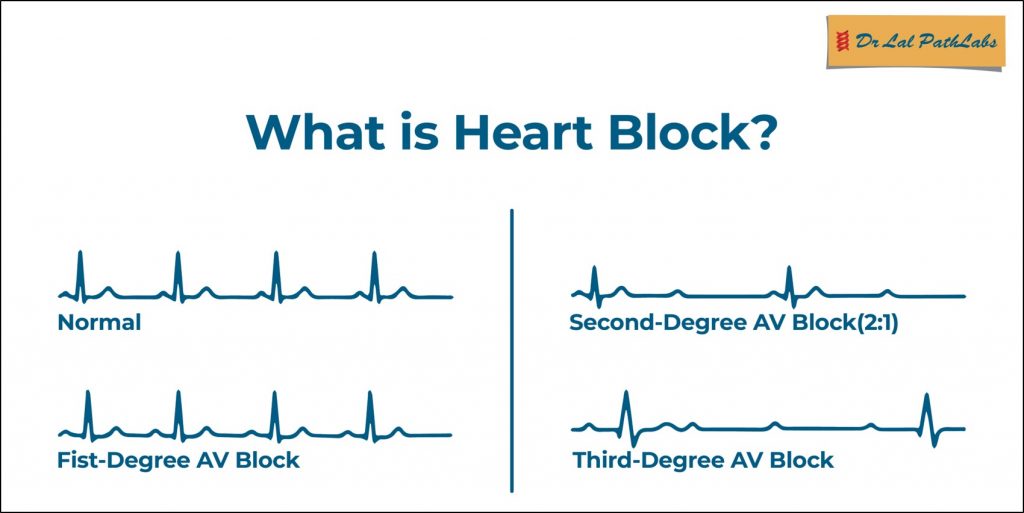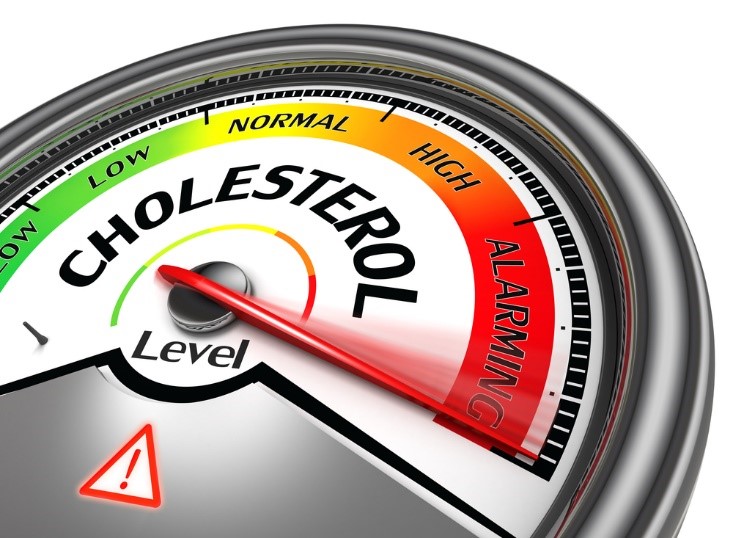Heart Block: Symptoms and Diagnosis

‘Heart block’ is a cardiac arrhythmic condition where electrical impulses in the heart are partially or completely blocked. This disruption causes the heart to beat slowly or irregularly.
Heart block is different from blockages in the arteries or coronary artery disease, where the plaque deposited in the arteries obstructs blood flow. Nevertheless, untreated heart block can potentially lead to more serious heart conditions.
In this blog, we will learn about heart blocks, their causes, symptoms, general signs of blockage, and steps for prevention and treatment.
What is heart block?
Electric impulses play a vital role in the functioning of the human heart. Electric impulses are generated at the sinoatrial (SA) node at the right atrium and conducted down to the ventricles through the atrioventricular (AV) node. This causes a ventricle contraction, causing blood to be pumped into the body.
When a heart block occurs, the electrical impulses are disrupted. So, the ventricles do not contract and pump blood as usual, causing a disorder in how the heart beats. This is reflected as a slow or irregular heartbeat.
What are the types of heart block?
1. First-degree atrioventricular heart block
If the electrical impulses reach the ventricles at a slower rate but without being disrupted, the heart block is classified as a first-degree heart block. This is a minor form of heart block and usually does not require treatment.
2. Second-degree atrioventricular heart block
Here, the electrical impulses are slowed down and occasionally do not reach the ventricles at all. This causes slow and skipped heartbeats.
There are two types of second-degree heart block.
Type 1: This is also known as Mobitz 1 or Wencheback’s AV block. There is a prolonged electrical conduction delay until a beat is missed. Second-degree type-1 heart block symptoms include dizziness, weakness, and palpitations. This condition is more serious than first-degree blocks and requires treatment. In rare cases, a pacemaker can be used to detect and regulate delays in the heart’s electrical conduction.
Type 2: This is also known as Mobitz type 2 and is usually more severe than type 1. Here, some beats are entirely blocked, and others are not. A significant difference between Mobitz type 1 and 2 is that unlike type 1, where a prolonged delay precedes a missed beat, missed beats happen randomly in Mobitz type 2. Type 2 heart block symptoms include chest pain, dizziness, tiredness, fainting, skipped heartbeats and difficulty breathing. Mobitz type 2, most of the time, requires the placement of a pacemaker for treatment.
3. Third-degree atrioventricular heart block
At this stage, there is no electrical impulse conduction to the ventricles at all. Complete heart block is a potentially life-threatening condition and can lead to a ventricular standstill, a situation where the heart stops beating or a sudden cardiac death.
To treat third-degree heart block, a pacemaker is implanted to maintain the electrical impulses for a steady heartbeat.
4. Bundle branch block
While the first three types of heart block are all related to the transmission of electrical impulses to the ventricles, this type of heart block pertains to the heart’s chambers. The human heart is divided into the right and the left chambers. Heart blocks in the right bundle branch of the heart are known as the right bundle branch block, while the one that occurs in the left is the left bundle branch block.
In the case of a right bundle branch block, there is a delay in electrical transmission at the right part of the heart compared to the left. It occurs in older people and can result from lung or heart problems or changes due to old age.
For the left bundle branch block, electrical conduction in the left part of the heart is delayed compared to the right. This occurs majorly in young people. It can happen in people with no prior heart condition and can result from heart disease.
5. Tachybrady syndrome
Tachybrady is a condition where tachycardia (fast heart rate) and bradycardia (slow heart rate) occur alternatively. It results from problems with the part of the heart that regulates the speed of heartbeats.
What are the causes of heart block?
Heart block can be a result of congenital heart disease. It can also be acquired due to the following conditions:
- Heart attack
- Heart surgery
- Old age
- Lyme disease
- Cardiomyopathy
- High potassium levels
How to diagnose heart block?
Regular health checkups are crucial for detecting any abnormal conditions in the heart. You can undergo an electrocardiogram (ECG) test to check the electrical activity of your heart. Electrodes are connected to your heart, and the electrocardiogram machine records the heart’s activity.
How can you prevent heart block?
You can reduce the risk of heart disease and prevent heart block through a healthy lifestyle. A healthy lifestyle includes:
- Healthy diet
- Regular exercise
- Adequate sleep
- Keeping a healthy weight
- Stress reduction
- Avoiding excessive alcohol intake
- Not smoking
- Regular health checkups
Sometimes, heart blocks go away independently after treatment, mainly when no underlying health condition exists. However, in most cases, lifelong treatment is needed. A healthy lifestyle reduces the risk factors for a heart block. However, if you detect a slow or irregular heartbeat, do not hesitate to contact your doctor for a medical checkup.













